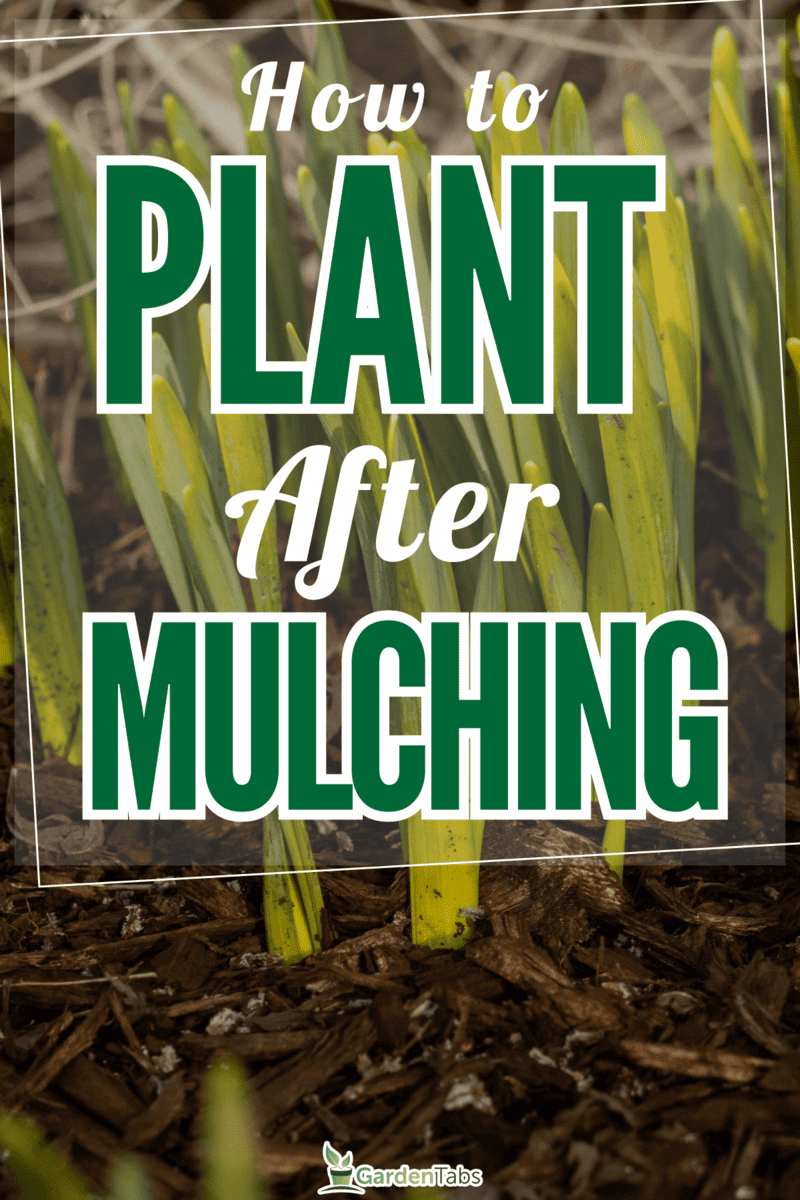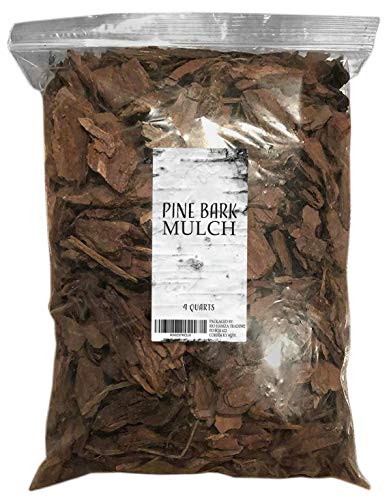Can you plant new flowers after you've already mulched the plant beds in your garden? If yes, how do you do this? Will it affect the mulches that you've placed on top of the soil? If you're asking these questions in your mind, sit back and read this article. We've asked the gardening experts, and here's their answer.
Yes, you can plant even after mulching, and here's how you do it:
- Scrape the mulch carefully and put it on one side.
- Remove soil to free up space for planting. Put the soil in a container to prevent mixing up with the mulch.
- Plant what you want to grow.
- Put back the soil to cover the roots of your new plants.
- Reinstall the mulch.
Keep on reading to know more about planting after mulching. We'll also answer if seeds can grow through the mulch and when the best time for mulching is. We'll also teach new gardeners how to lay mulch on their planting beds and how to choose the best mulch for their garden. Let's get this started!
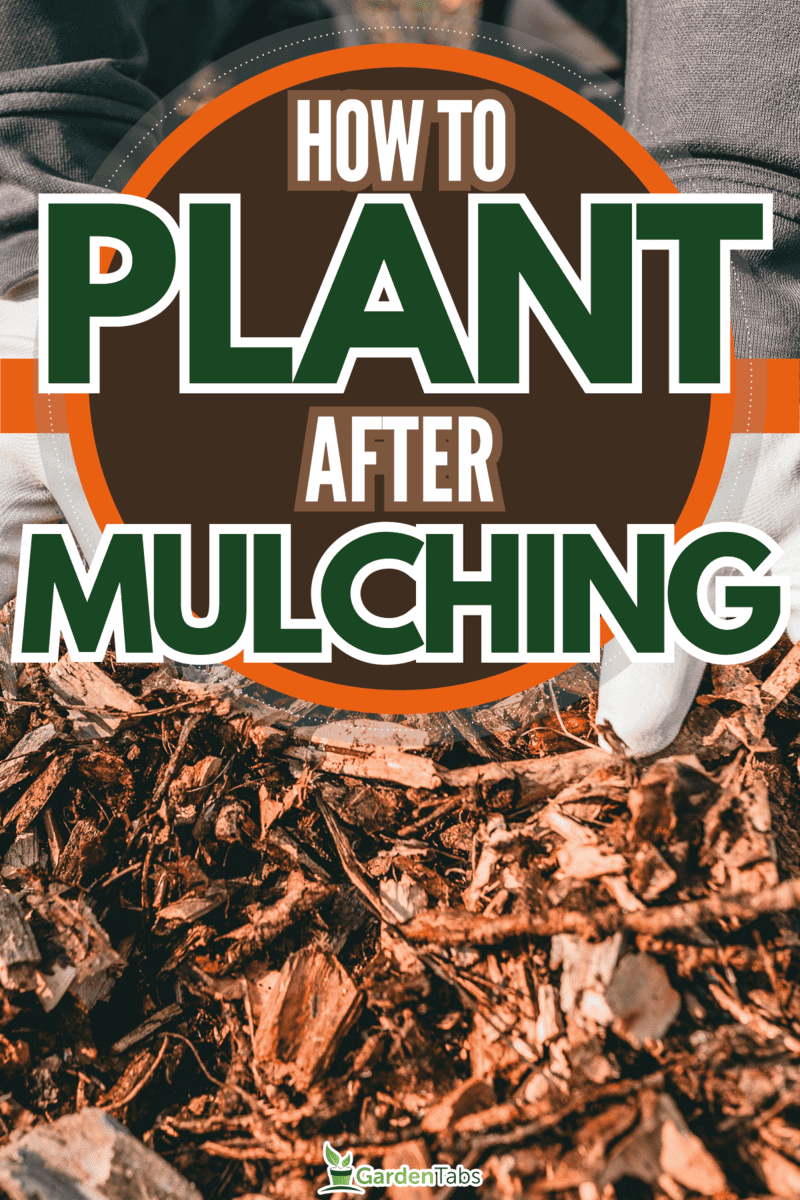
How To Plant In An Already Mulched Flowerbed
Mulch is a thick layer of material, whether organic or inorganic, used to top the soil to enhance its quality and protect the plants. These materials help seal moisture in the soil, protect it from heat and winds, and prevent irritating weeds from growing on your flowerbeds.
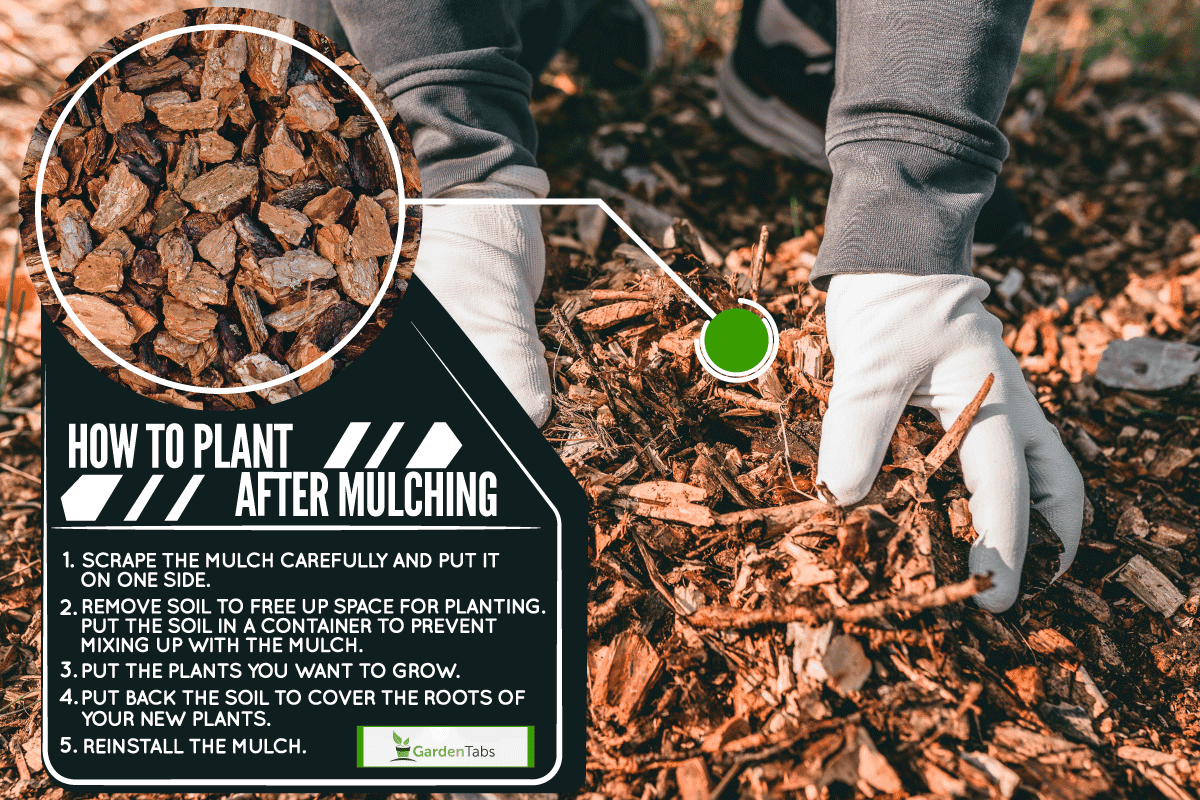
Of course, it also helps that mulches can improve your garden's look by helping define or highlight areas that you want to accentuate.
It is no wonder that gardeners make an effort to mulch their flowerbeds. However, if the mulches have already been in place, can you still put new plants in the soil?
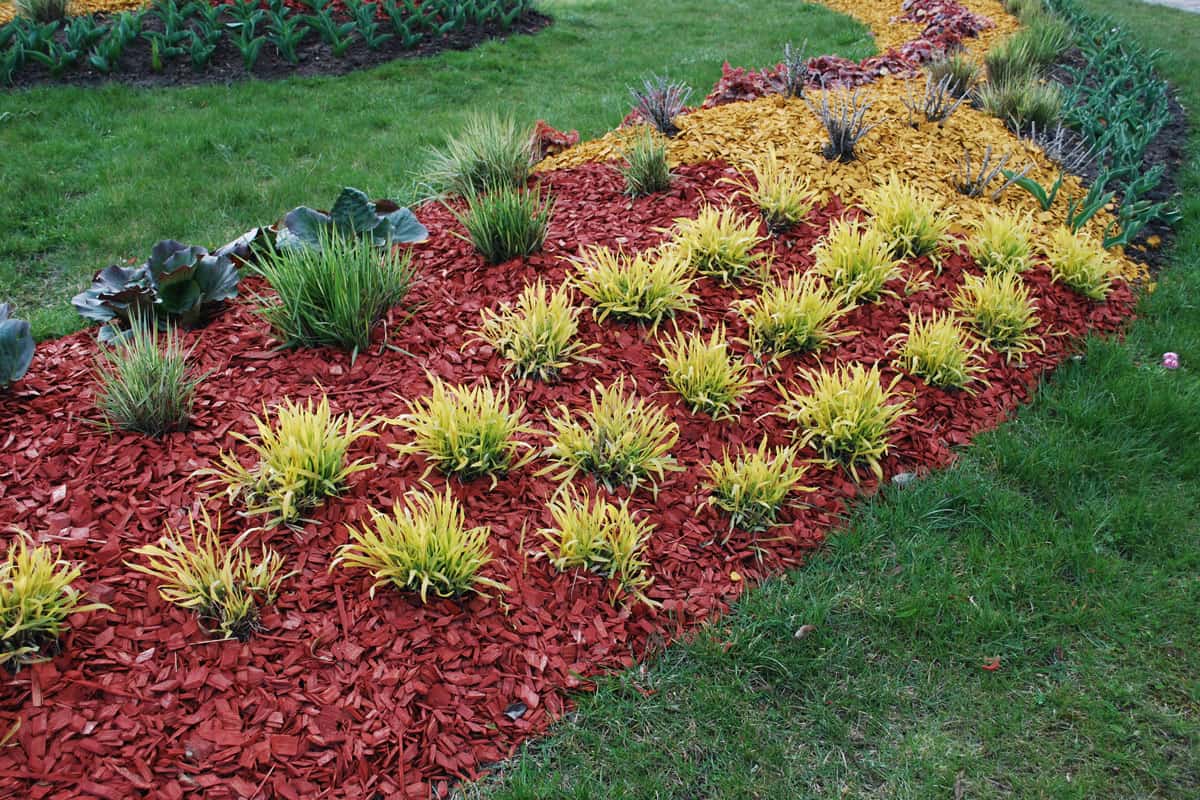
The answer to this question is, yes, you can still plant in an already mulched flowerbed. The idea that mulching is done after planting is only applicable to new gardens. After the mulch has been installed, you're still free to plant flowers, shrubs, or whatever you wish to grow in your garden.
Here's how to do it:
- Remove the mulch from the top of the soil and set it aside.
- Dig as much soil as you need for planting. You can put the extracted soil in a sack or bucket so that it won't get mixed up with the mulch pile.
- You can now put the plants you want to grow in the soil.
- Put back the extracted soil to cover the new plants.
- Rake in the mulch and spread it evenly on the flowerbed.
There you go! That's how you plant after mulching. Easy and simple, right?
Will seeds grow up through mulch?
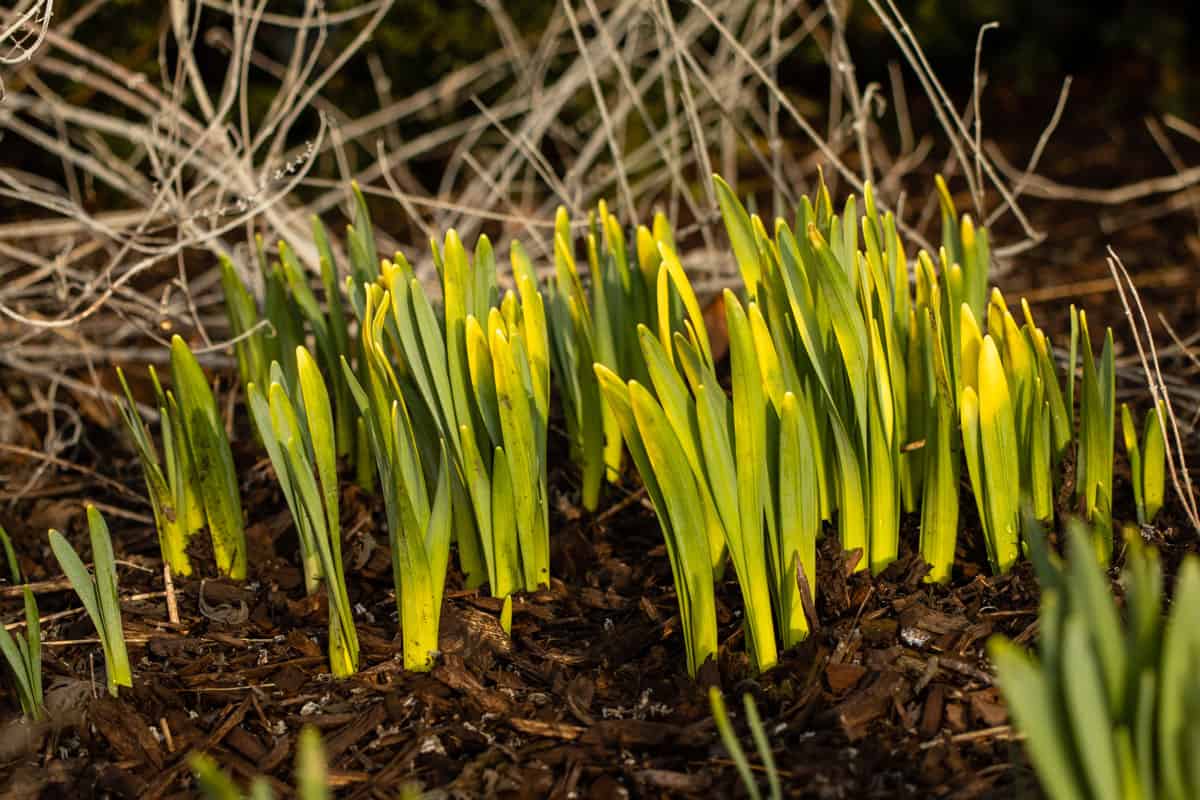
One common concern among new gardeners is if it would be okay to plant seeds in a mulched flowerbed. Will they be able to grow and emerge through the mulch to share their beauty with the rest of the world?
Unfortunately, seeds will have a hard time growing through mulch. When they germinate and little baby plants sprout from the seed coat, they would rely heavily on sunlight, water, and air for their nutrition.
Unfortunately, mulch blocks these elements from reaching the newly-sprouted plants, so they won't get the nutrients that they need and will eventually die. This is also the same reason why weeds don't thrive in mulched plant beds.
It is best to put established, mature, and perennial plants in mulched soils. Those that grow from bulbs also have what it takes to grow through mulch. This is because they have lots of stored energy in their bulbs, so they don't depend on sunlight and oxygen too much for their nutrition.
So, better remember this when you're thinking about planting after mulching. You have to choose the right plants that will be able to grow through mulch so that you don't end up killing them.
When is the right time to mulch my garden?
Expert gardeners recommend springtime as the right time to mulch your garden.
Early spring is the time when the plants are just starting to grow and the soil is beginning to warm up after being cold for months. It's like the soil and the plants are reawakening, and you'd want to lock in just enough of that moisture in preparation for summer's heat while also using mulch to prevent the growth of unwanted plants.
How To Lay Mulch
Now that you know the best time for mulching, it would be helpful to know how to lay mulch properly so that you get it right the first time around.
Organic or Inorganic
The first thing you need to do is choose the right mulch for you. Organic mulch is made of materials that'll decompose over time. This means that you have to replenish them from time to time. Examples are tree bark, wood chips, compost, and leaves. On the other hand, inorganic mulch, such as rocks, rubber, and plastic sheets, won't break down as years pass by.
Find this pine bark mulch on Amazon.
How Many Mulch Bags Do You Need
Next, you have to calculate how much mulch you would need for your garden. To do this, you just measure the length and width of each planting bed where you'll put mulch. Multiply each length and width so that you can determine the square footage of each area and just add them all together to know how many bags of mulch you need to buy to cover your flowerbeds completely.
Schedule Your Mulching
When mulching, timing is key for you to maximize its benefits. As mentioned earlier, it is best to mulch during the early part of spring when the plants are just beginning to grow. It's also fine to mulch during the fall season to make sure you have soil cover for the coming winter.
Laying Mulch
Now you just need to get other tools and materials ready, and you're all set for your mulching.
Tools and Materials
- Wheelbarrow
- Shovel or pitchfork
- Bow rake
- Spade
- Gloves
Click this link to find this heavy-duty bow rake on Amazon.
Steps to Lay Mulch
- Wear your gloves for protection.
- Clean the area that you're mulching. Remove any dirt, debris, weeds, fallen leaves, and sticks.
- Define the edge around the planting bed by using a spade.
- This is the perfect time to apply pre-emergent herbicide to prevent unwanted plants from growing in your planting bed.
- Water the soil.
- Put mulch on top of the soil. Spread it evenly with the help of the rake. The mulch should be around 2 to 4 inches thick.
- Water again. This will aid in settling the mulch in place.
Check out this pre-emergent weed control on Amazon.
That's it! You've just mulched your garden.
How To Choose The Best Type of Mulch
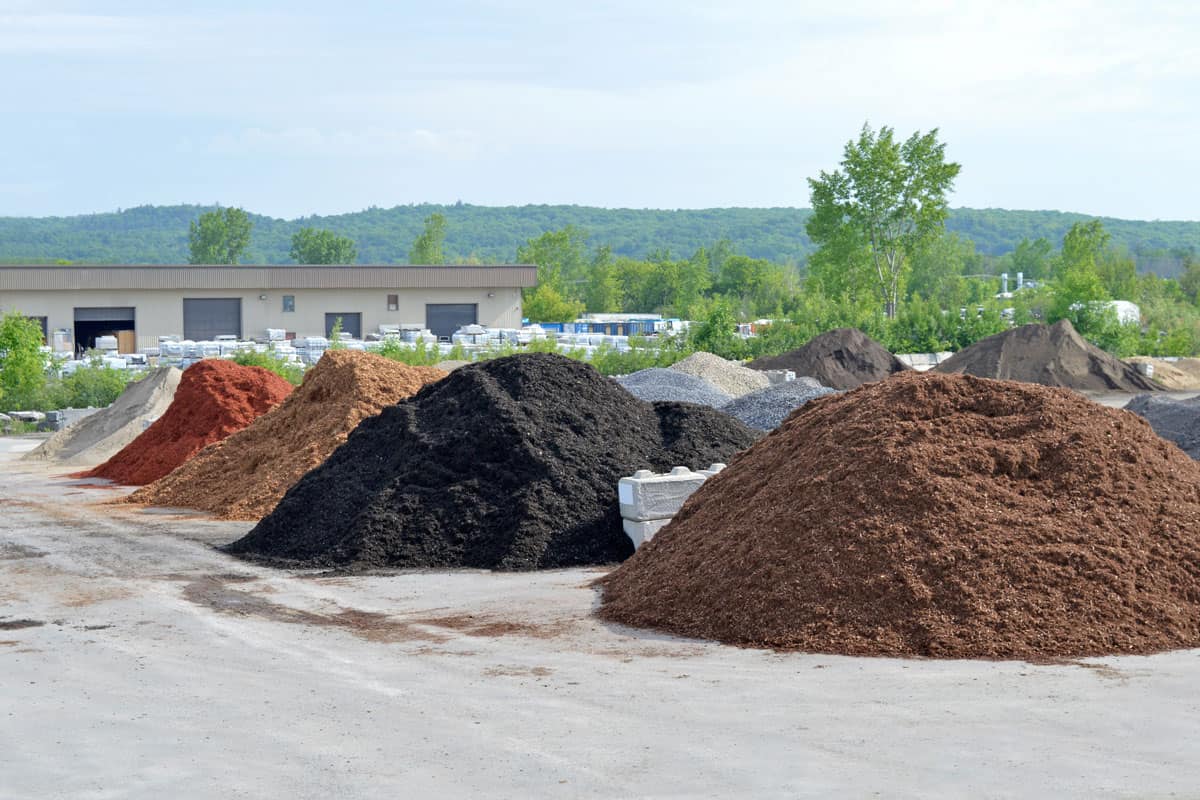
There are various types of mulches on the market. Each one is made from different materials and has different properties that can help improve the quality of your soil, protect your plants, or enhance the look of your lawn or garden.
Below are some of them, for examples.
Grass, Straw, and Hay
You can get these from your garden a neighbor's farm, or if you buy them from the store, they are very cheap. They should be very dry to prevent mold growth. Be careful because some of them might contain weed seeds that will easily spread throughout your garden if they aren't suppressed immediately.
Natural Wood and Tree Bark
Wood and bark from trees can also be turned into smaller particles such as chips and sawdust. Each wood type offers different benefits. For example, cedar and eucalyptus can help you repel insects in your garden because of their scents. However, be cautious about using this type of mulch as some pests are attracted to wood.
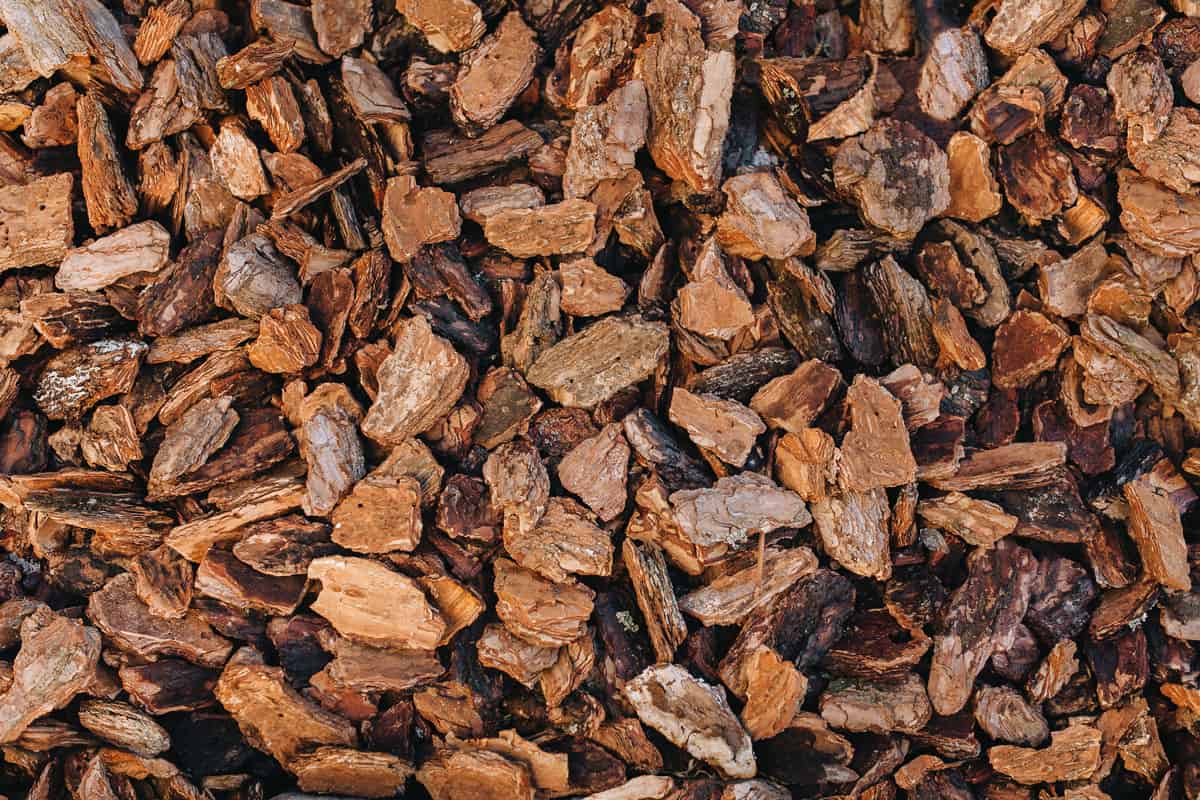
Stone and Sand
You can use these as mulch, but it's best to put landscape fabric underneath to prevent stones or sand from sinking into the soil. Their weight will help make the soil warmer and prevent weeds from growing. This type of mulch can be quite expensive. But it'll be worth it because it can be very attractive, which will make your lawn or garden stand out.
Decomposing Leaves and Compost
These are inexpensive and will help you provide the nutrients needed by the soil and plants. However, you also need to look out for weed seeds. They can also be acidic, so you need to check their compatibility with the plants that you want to grow.
Plastic
This material will help insulate the soil, reduce moisture loss, and prevent erosion. Black plastic sheets can help control weed growth. However, most plastics are non-biodegradable. So, look for photodegradable plastic films to make your mulching more environment-friendly.
Paper
This is another inexpensive mulch type. It can be folded or shredded, but you need to use this with other mulches or compost to add weight to it so that it won't easily be blown away by the wind. It is better if you use resin paper as this has more water resistance.
These are the mulches that you'll see on the market. Choose which one suits your gardening needs and preferences so that you'll have the best type of mulch.
Final Thoughts
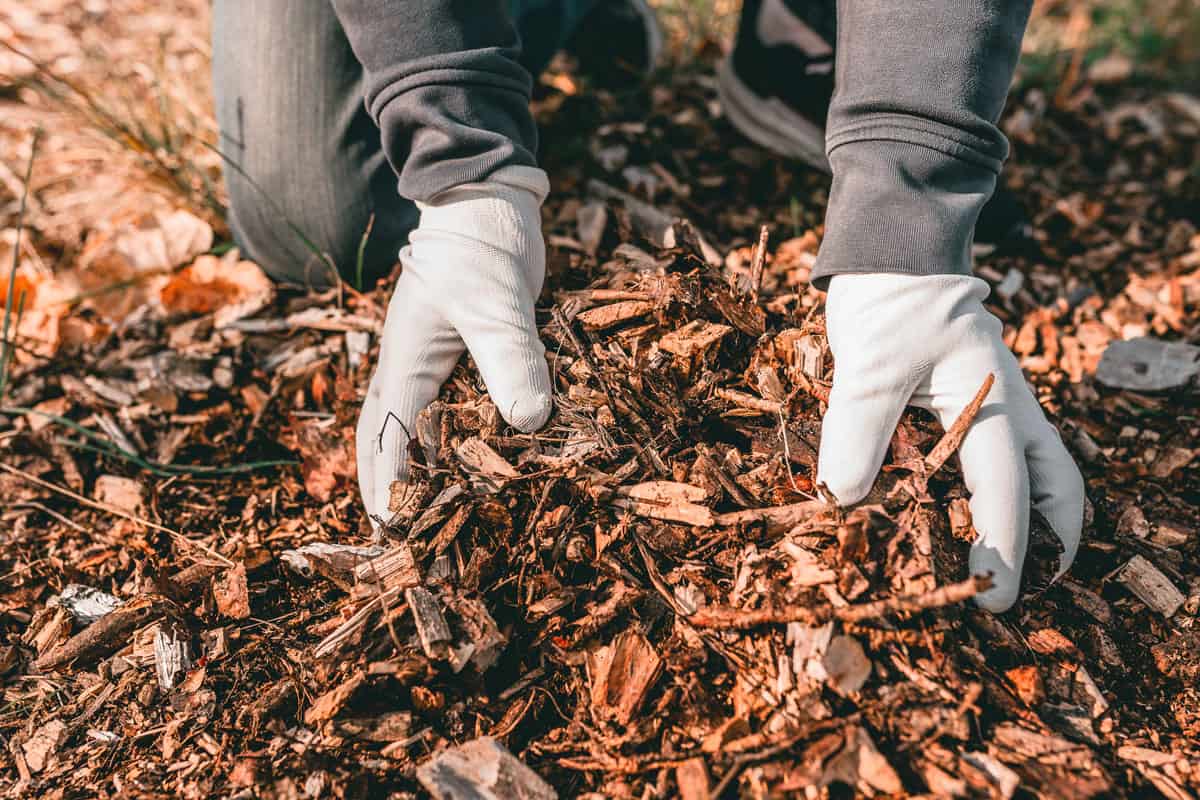
To plant after mulching, carefully remove the mulch and soil so you can put your new plant. But make sure that you don't mix these two components. After planting, put back the old soil and then the mulch. That's it! Happy planting!
If you want to read more about mulching, feel free to visit the following posts:

